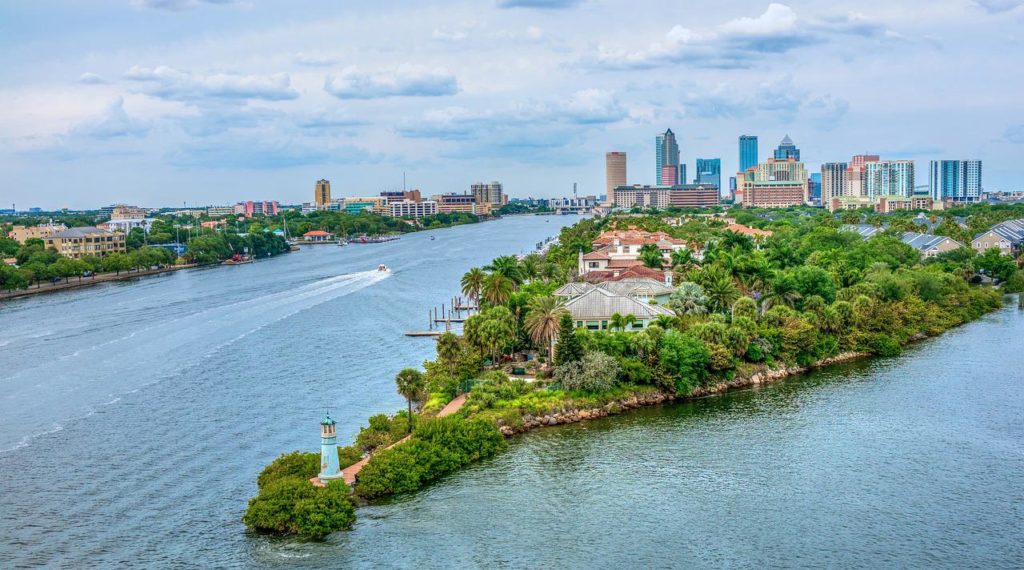
Article Summary: National Parks Near Tampa
National Parks near Tampa. There’s so much more to this beautiful state than the Tampa Bay Buccaneers. In this article, we’ll familiarize you with the incredible national park sites that are within a six hour drive of Tampa, Florida.
There are 9 national park sites for you to see that are within a day’s drive of downtown Tampa.
I’ve been to so many of these amazing places since retiring from teaching in 2018. Did I mention that I taught history? I spent a lifetime teaching about the history behind these momentous sites. Then I got to see them firsthand. And now I’m sharing the stories of these incredible places with you. It doesn’t get any better than that!
Tampa is known for the vibrant Ybor City, the gigantic Florida Aquarium, the heart-pumping Busch Gardens, and for being the birthplace of the Cuban sandwich.
It’s also famous for its lush parks, cigar factories, contemporary museums, high-end eateries, and stunning sidewalks.
And let’s not forget about those fabulous national parks that are a day’s drive (or less) from the city.
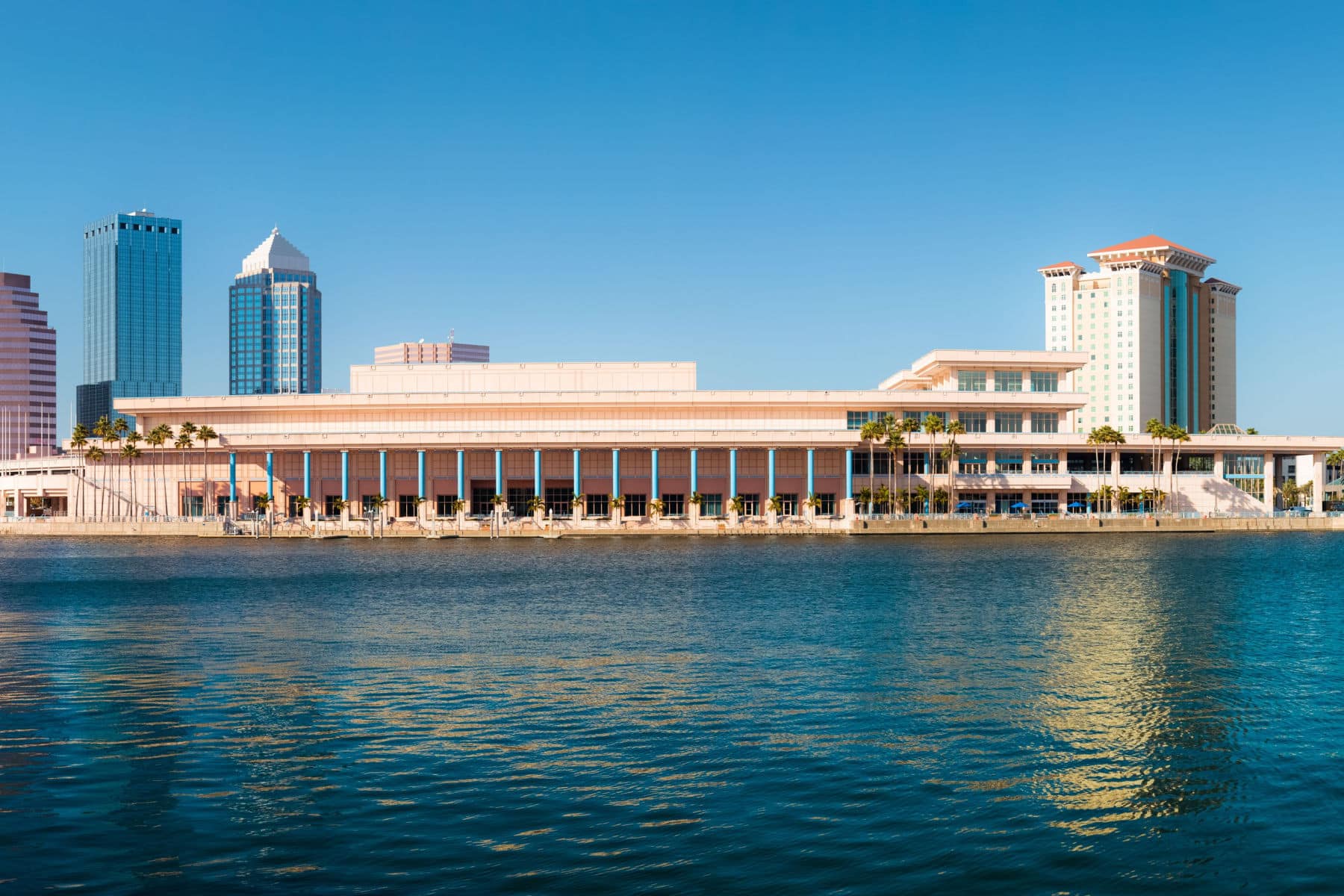
So, What Is A National Park?
We get asked that question a lot because there’s a difference between a “national park” and a “national park site.” To help you understand that difference you might want to check out our article titled: What Is A National Park Really?
If you’re planning a trip to the Tampa area then one book that I highly recommend is: A Walking Tour of Tampa, Florida by Doug Gelbert.
Now let’s go ahead with 9 reasons why you’ll want to make a drive of six hours (or less) from Tampa to visit one of these amazing places.
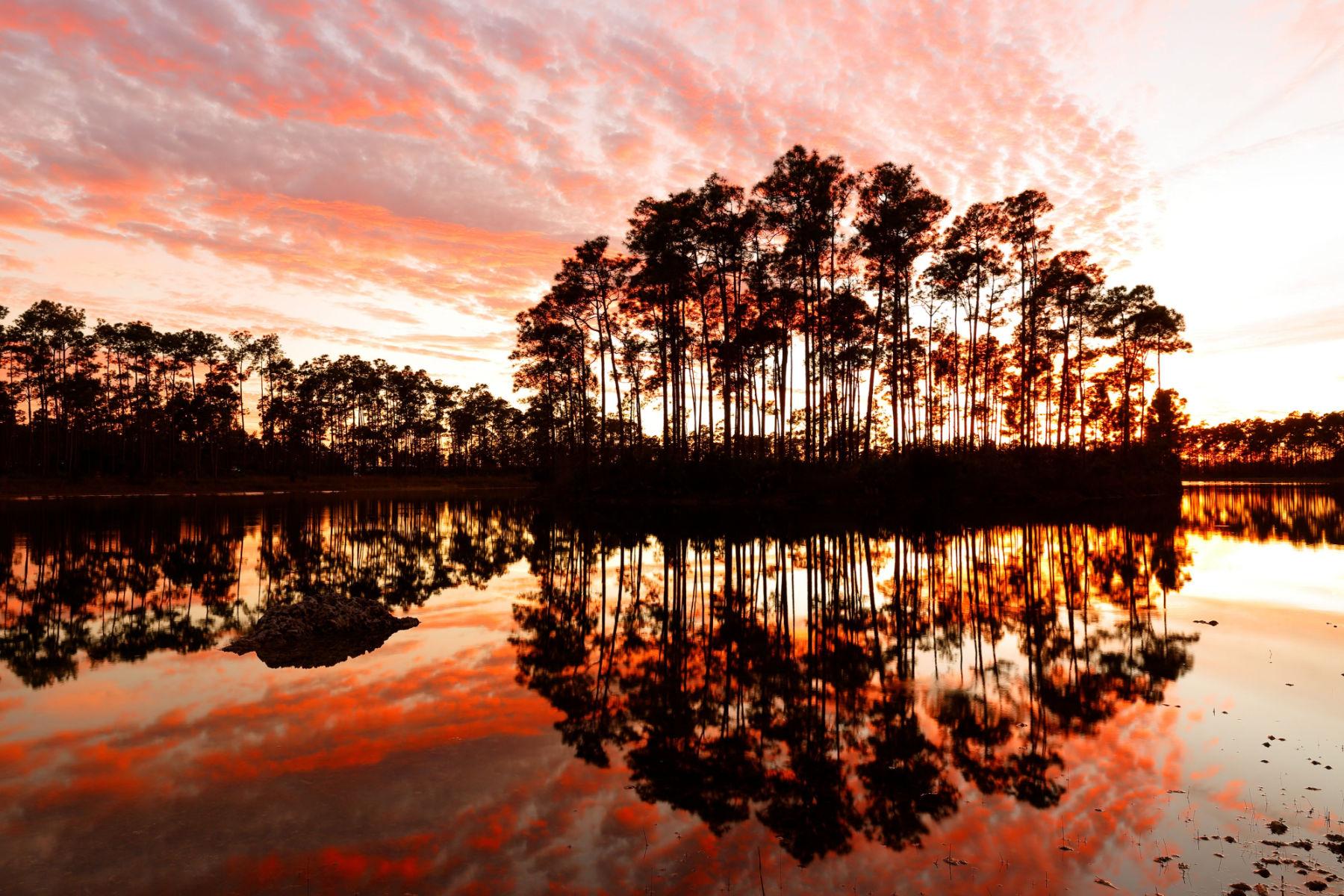
Table Of Contents: National Parks Near Tampa
Best National Parks Near Tampa
1. Everglades National Park
Distance From Tampa: Three hours via I-75 S.
Everglades National Park was established in 1947 and covers an area of over 1.5 million acres, making it the largest subtropical wilderness in the United States. The park is home to a wide variety of plant and animal species, many of which are found nowhere else in the world.
The Everglades are a vast wetland ecosystem that consists of slow-moving rivers, sawgrass marshes, mangrove forests, and hardwood hammocks. The park is also a critical habitat for numerous threatened and endangered species, including the American alligator, the manatee, and the endangered Florida panther.
Visitors to the park can enjoy a range of activities, including hiking, bird watching, fishing, and boating. There are also several ranger-led programs available, including guided walks, canoe trips, and educational programs.
In addition to its natural beauty and diverse wildlife, the Everglades is also an important cultural and historical site, with a rich history dating back thousands of years to the indigenous peoples who once lived in the area. Today, the park continues to be a source of inspiration and a symbol of conservation for people around the world.

CHECK OUT: 11 SURPRISING Everglades National Park Facts
2. Biscayne National Park
Distance From Tampa: Four hours & 22 minutes via I-75 South.
Biscayne National Park was established in 1980 and covers an area of over 172,000 acres, including the southern portion of Biscayne Bay, its surrounding mangrove forests, and the offshore barrier reefs.
The park is unique in that 95% of its area is covered by water, making it the largest marine park in the National Park System. It is a popular destination for boaters, snorkelers, and scuba divers, who come to explore the vibrant coral reefs, mangrove forests, and shipwrecks in the park’s crystal-clear waters.
Visitors to the park can also enjoy a range of land-based activities, including hiking, camping, and wildlife viewing. The park is home to a variety of plant and animal species, including manatees, sea turtles, and numerous bird species.
In addition to its natural beauty and rich marine life, Biscayne National Park also has a rich cultural history, with evidence of human habitation in the area dating back thousands of years. Today, the park continues to be an important source of recreation and a symbol of conservation for people around the world.
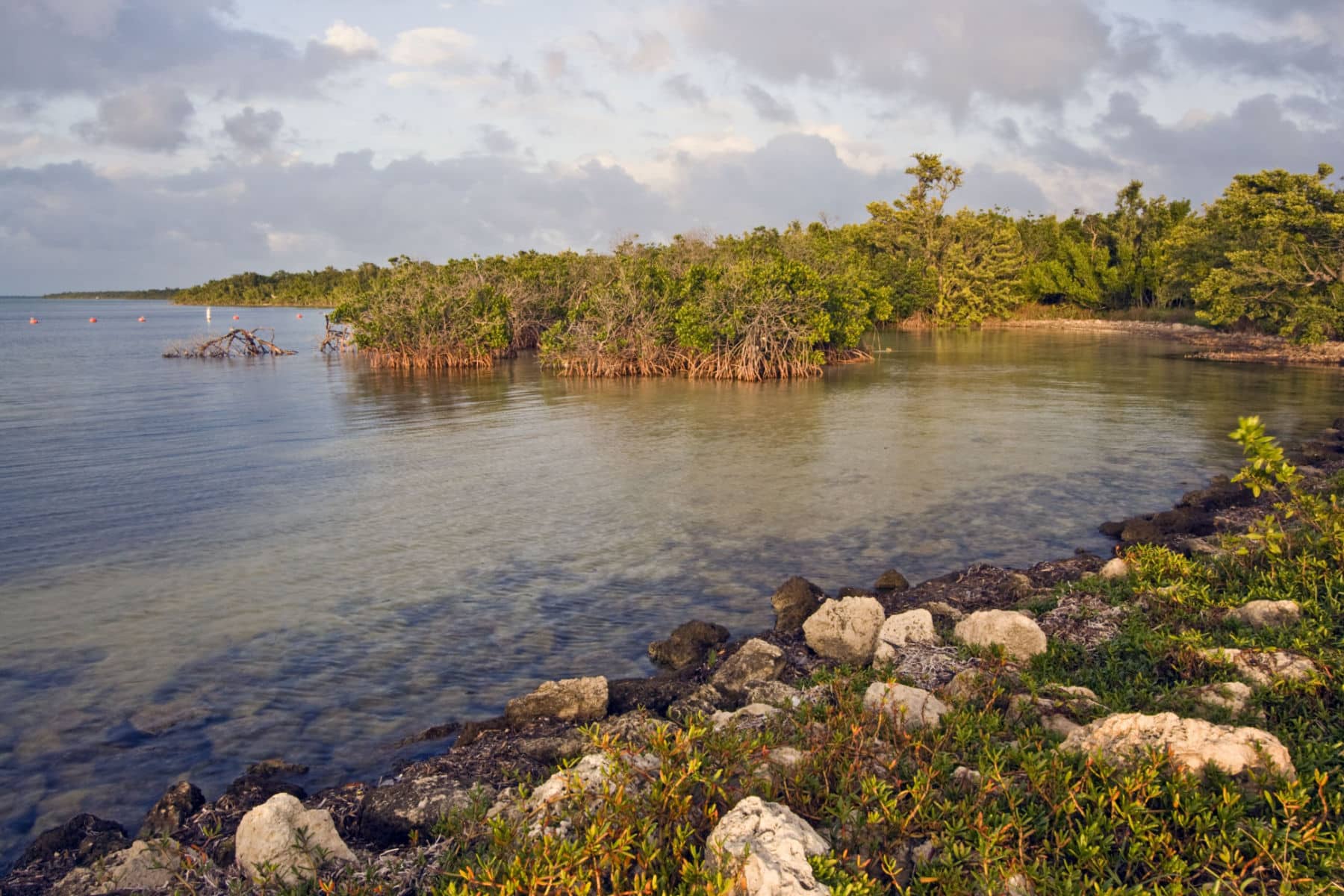
CHECK OUT: 15 AMAZING Facts About Biscayne National Park
Best Things to Do at Biscayne National Park
Scuba Diving is one of Biscayne National Park’s primary activities as 90% of the park is underwater. The reefs here are no stranger to the adverse effects of climate change as the entire ecosystem is under threat.
Boating is another great way to see and explore the park. Biscayne is full of beautiful mangrove swamps which are best viewed by kayak or canoe.
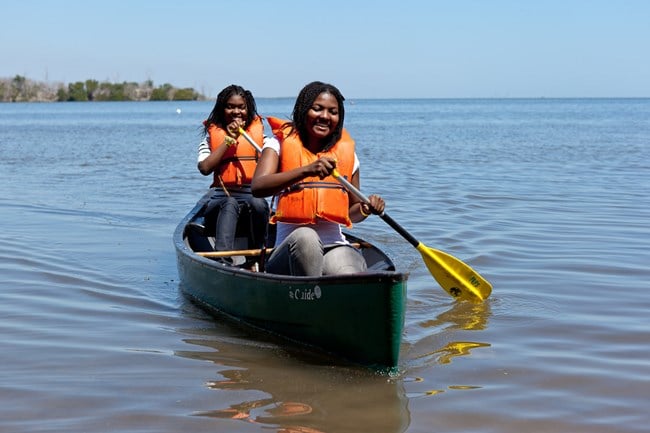
RELATED: 11 EPIC Florida National Parks Worth Visiting
3. Timucuan Ecological & Historic Preserve
Distance From Tampa: Three hours & 30 minutes via I-75 N & US-301 N.
The Timucuan Ecological & Historic Preserve was established to preserve the natural and cultural resources of the Timucuan region, which encompasses over 46,000 acres of wetlands, forests, and coastal habitats.
The preserve is home to a diverse array of wildlife, including alligators, river otters, and many species of birds, as well as several threatened and endangered species. The area also contains numerous archaeological sites that provide insight into the rich cultural history of the Timucuan people, who lived in the region for thousands of years before European contact.
Visitors to the Timucuan Ecological & Historic Preserve can participate in a variety of recreational activities, including hiking, canoeing, and wildlife viewing. The park also offers several historic sites to visit, including the Kingsley Plantation, Fort Caroline National Memorial, and the Ribault Club.
The Timucuan Ecological & Historic Preserve is managed by the National Park Service and is a popular destination for locals and tourists alike, offering a unique opportunity to explore the natural beauty and cultural heritage of northern Florida.
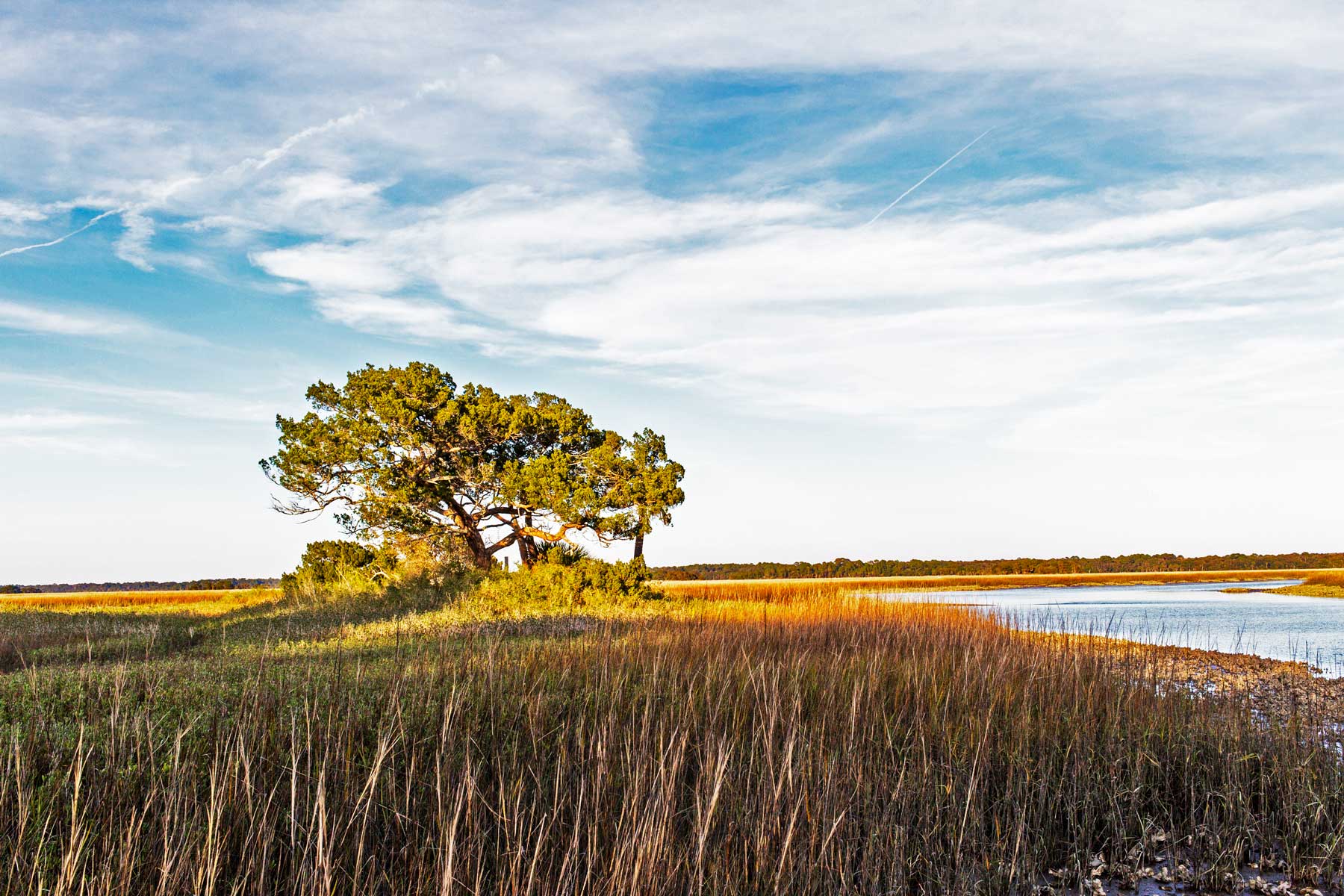
Things To Do
Theodore Roosevelt Area – This 600 acre natural area features great hiking trails amongst a wonderful hardwood forest.
Kingsley Plantation – This 19th century plantation tells the history of the plantation era on Fort George Island from the perspective of the folks who owned enslaved people as well the enslaved people themselves.
If you’re looking to make the most of your Florida adventure then I recommend Florida Bucket List Adventure Guide & Journal: Explore 50 Natural Wonders You Must See! It’s truly the ultimate dreamland for free spirits whose soul craves deep connection with nature.
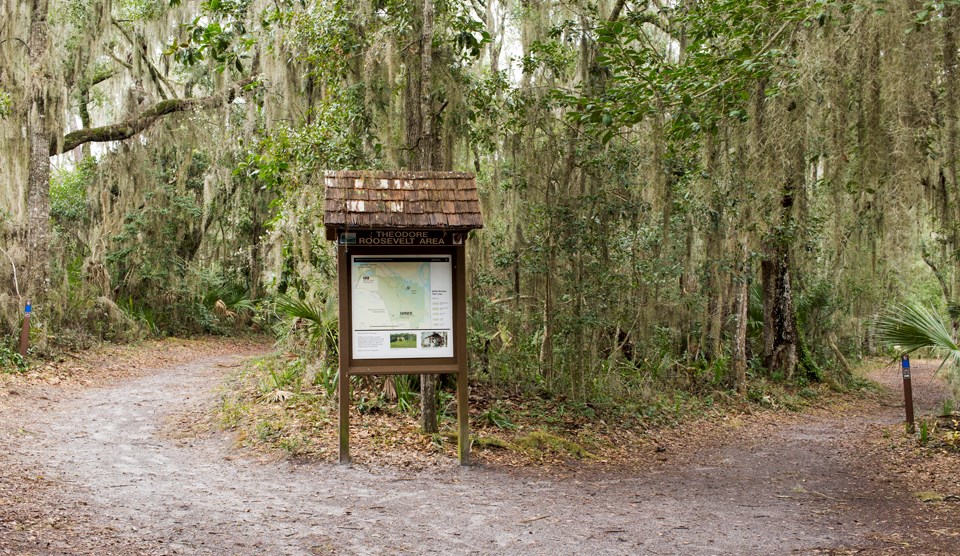
More National Parks Near Tampa
4. Big Cypress National Preserve
Distance From Tampa: 2 Hours & 54 minutes via I-75 S.
The Big Cypress National Preserve was established in 1974 to preserve the unique wetland ecosystem of the Big Cypress Swamp, which covers more than 729,000 acres of cypress trees, sawgrass prairies, and mangrove forests.
The preserve is home to a diverse array of wildlife, including the American alligator, the Florida panther, and the West Indian manatee, as well as hundreds of species of birds, reptiles, and mammals. The area is also an important water resource, providing essential recharge for the Biscayne Aquifer, which supplies drinking water to millions of people in South Florida.
Visitors to the Big Cypress National Preserve can participate in a variety of recreational activities, including hiking, camping, hunting, fishing, and wildlife viewing. The preserve also offers several scenic drives and scenic overlooks, as well as several ranger-led programs, including swamp walks and canoe trips.
The Big Cypress National Preserve is managed by the National Park Service and is a popular destination for outdoor enthusiasts, nature lovers, and those interested in exploring the unique ecosystems of South Florida.
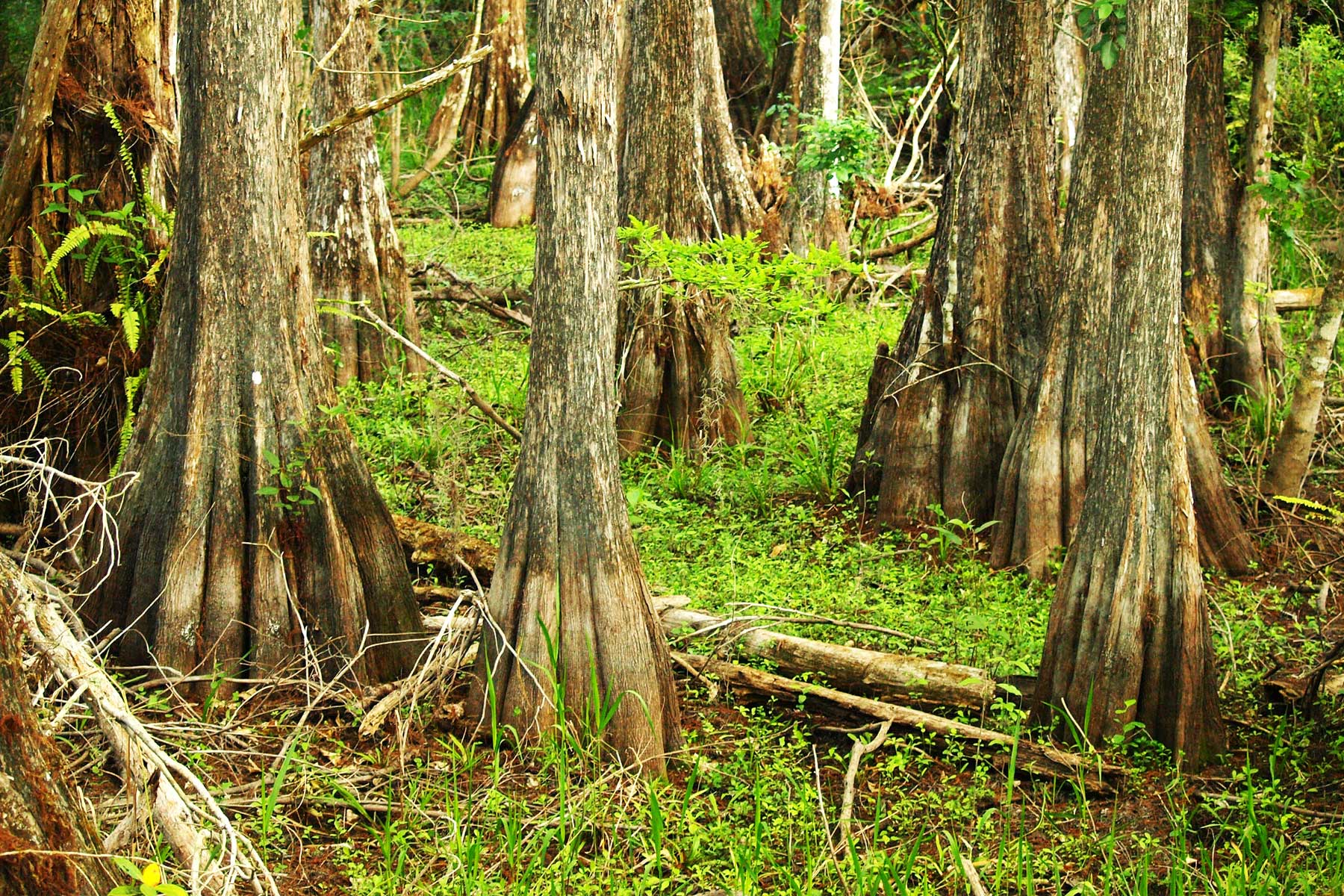
Highlights
Go Hiking – There are lots of great hikes in the Big Cypress National Preserve. The Kirby Storter Boardwalk is a great entry level quick hike that gives visitors a beautiful glimpse into the preserve.
Canoeing – Perhaps the best way to soak in the scenery Big Cypress National Preserve is via canoe. For everything you need to know about canoeing including where to put in and safety tips visit the Big Cypress NPS canoeing page.
Birding – Big Cypress is home to nearly 200 bird species which makes it a popular spot for birders.
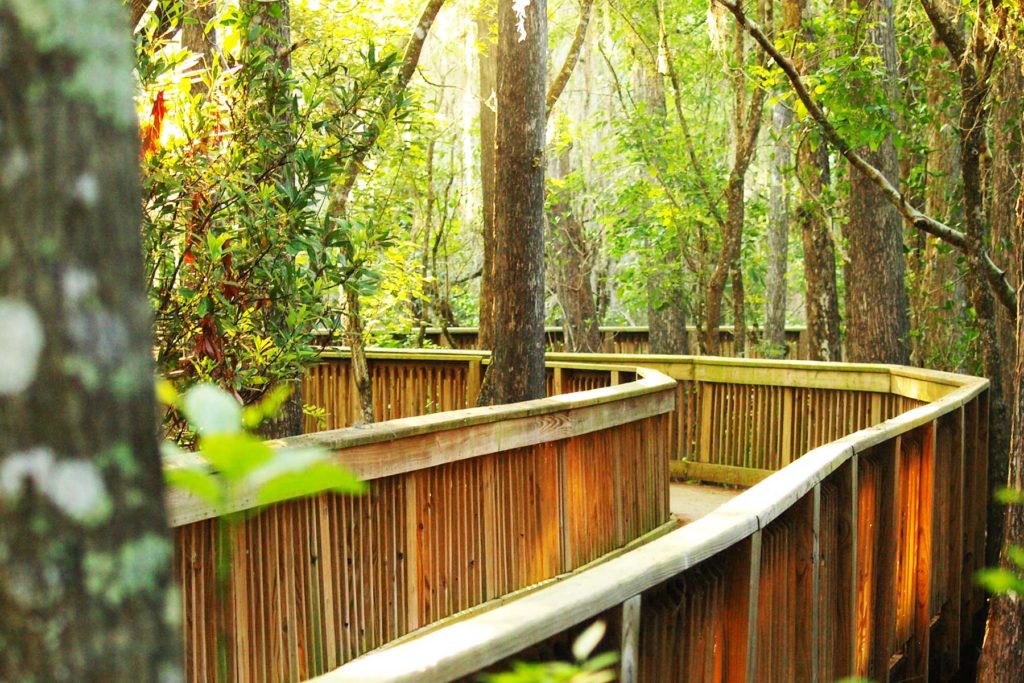
5. Canaveral National Seashore
Distance From Tampa: Two hours & 17 minutes via I-4 E & FL-528 E.
Canaveral National Seashore is a protected area located on a barrier island on the east coast of Florida, near the city of Titusville.
The seashore was established in 1975 to preserve the unique natural and cultural resources of the area, including over 24 miles of pristine Atlantic Ocean beach, dunes, marshes, and pine flatwoods.
The area has a rich cultural history, including evidence of thousands of years of human habitation by various indigenous groups, including the Timucuan and Seminole people.
During the 20th century, the area was used for military training, and later as a launch site for NASA’s space program, including the Apollo missions to the moon.
Visitors to Canaveral National Seashore can participate in a variety of recreational activities, including camping, hiking, fishing, and wildlife viewing. The seashore also offers several historic sites to visit, including the historic Playalinda Beach and the Eldora State House, a former hotel that served as a military barracks during World War II.
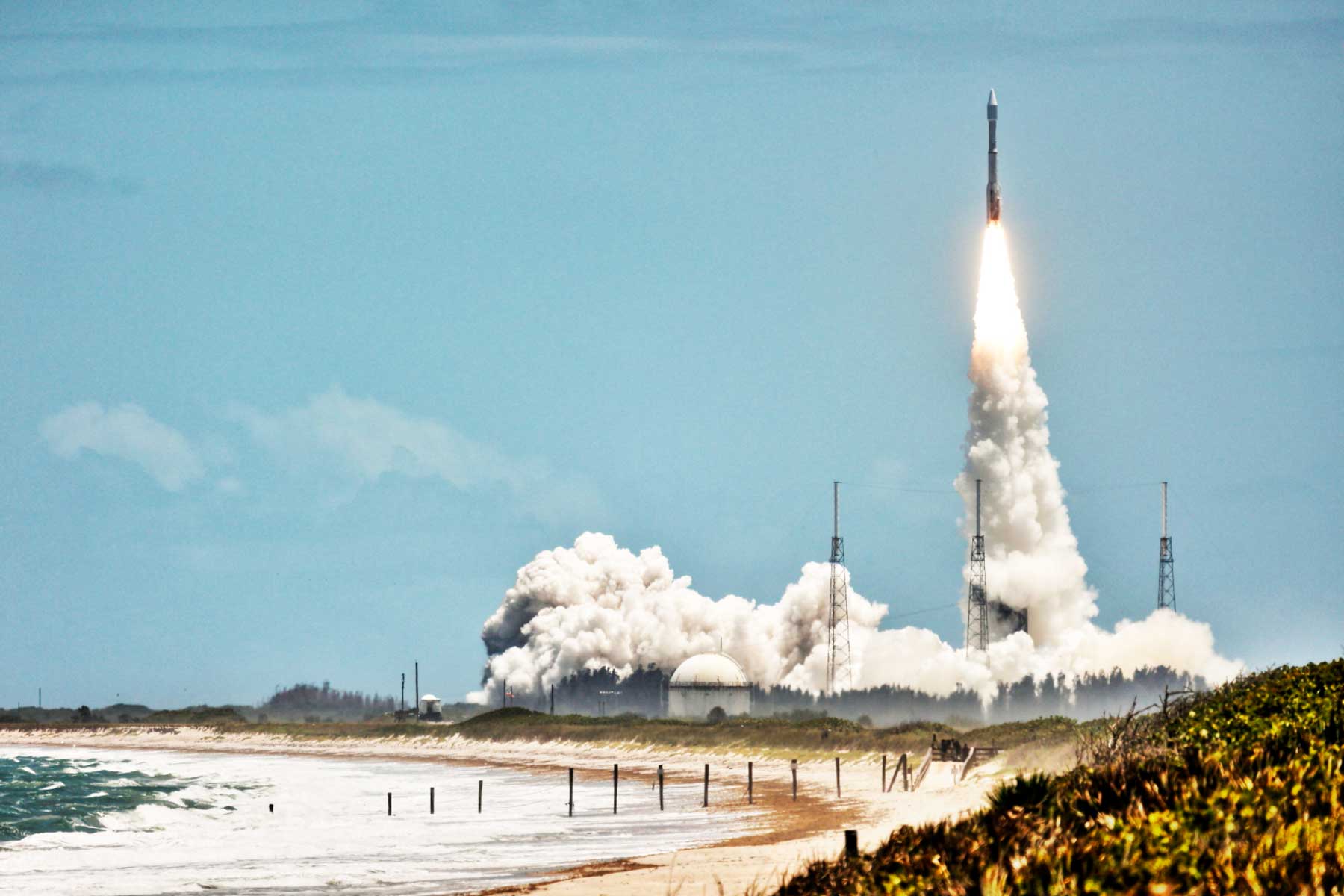
RELATED: Miami To Key West Drive: Everything You Need To See
Things To Do
Rocket Launch Viewing – Cape Canaveral is one of the best places in the world to watch a rocket blast off into space. As such, the national seashore draws millions of folks for this very reason every year.
Windy Castle Trail – The Windy Castle Trail is a great way to experience the flora and fauna of the region. Be sure to pack mosquito repellent as there is a very high chance you will encounter some on the trail.
6. Fort Matanzas National Monument
Distance From Tampa: Three hours via I-4 E.
Fort Matanzas National Monument is situated on a barrier island known as Rattlesnake Island, which is located at the mouth of the Matanzas River, approximately 14 miles south of St. Augustine.
The fort was constructed by the Spanish in 1742 to protect St. Augustine from potential British attacks, and it was named after the Matanzas River, which means “slaughters” in Spanish, in reference to the area’s violent history of conflicts between Spanish explorers and indigenous people.
Fort Matanzas is a small, coquina stone fort that is approximately 50 feet long and 30 feet wide, with a height of about 30 feet. The fort was designed to defend against attacks from the river and was armed with four cannons. The monument also includes a visitor center, a museum, and a nature trail.
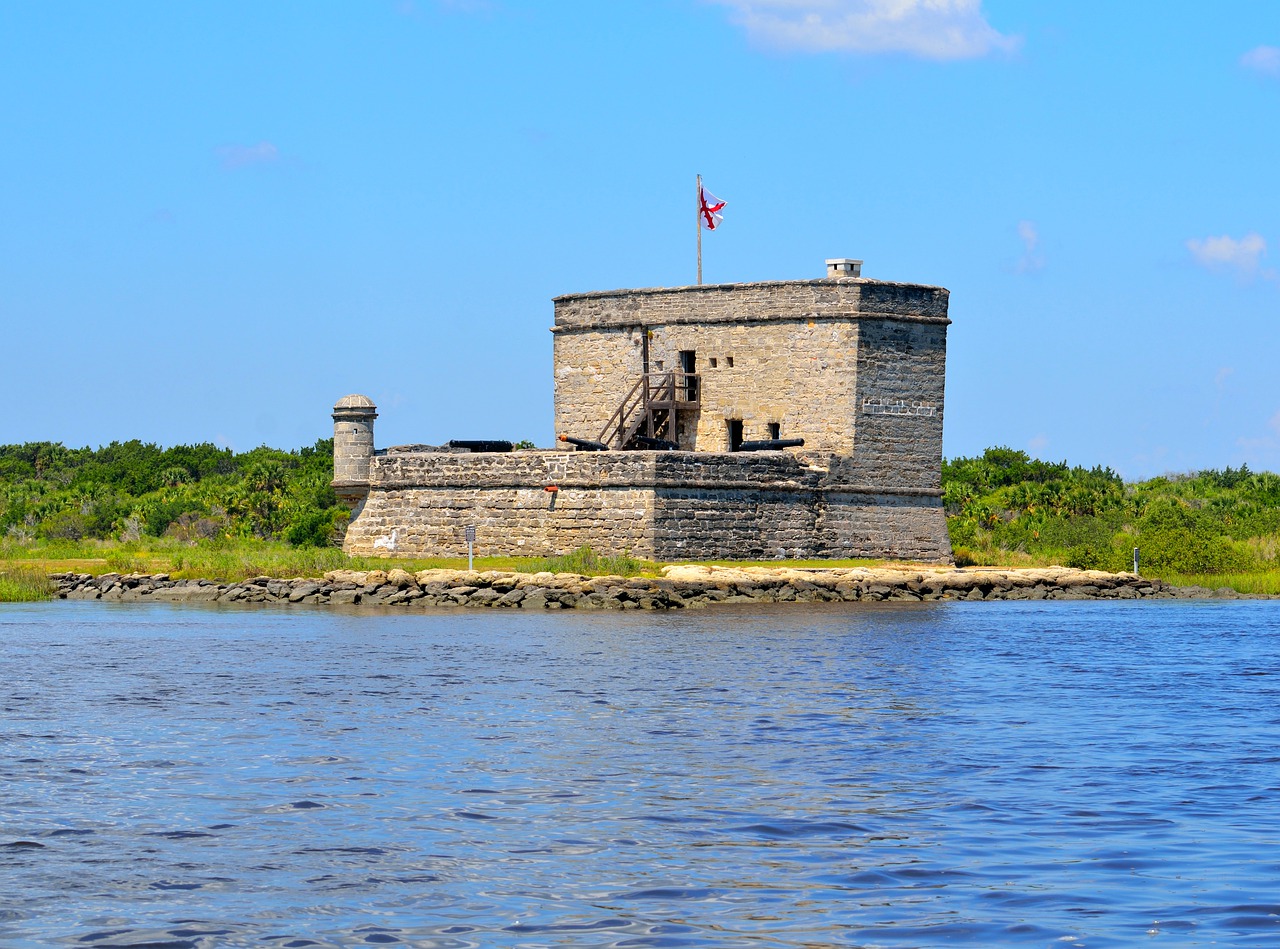
The Fort Played A Significant Role In The History Of Florida
The fort played a significant role in the history of Florida and the American South. During the 18th century, the fort was used to protect St. Augustine and its inhabitants from pirate raids and foreign military incursions.
In 1763, Florida became a British colony and the fort was occupied by the British army. However, the fort was retaken by the Spanish in 1783 and remained under Spanish control until 1821 when Florida became a territory of the United States.
In 1924, Fort Matanzas was declared a National Monument, and in 1933 it was placed under the jurisdiction of the National Park Service.
The fort was restored in the 1930s as part of the New Deal program, and today it is a popular tourist destination, attracting visitors from all over the world to learn about the history of the fort and the Spanish colonial period in Florida.
Things To Do & See There
Tour the Coquina Watchtower – The focal point of the park is the 18th century watchtower. Touring this amazing piece of history is something you have to do if you visit the park.
Nature Trail – The nature trail is another great and easy activity. The trail features all of the local flora and fauna and gives visitors an idea of what the ecosystem is like.
If you love history as much as I do then I recommend History of Florida: A Captivating Guide to the People and Events That Shaped the History of the Sunshine State.
Still More National Parks Near Tampa
7. Castillo de San Marcos National Monument
Distance From Tampa: Three hours & 15 minutes via I-4 E & I-95 N.
Castillo de San Marcos National Monument is the oldest masonry fort in the United States and one of the most significant historical landmarks in Florida.
The fort was constructed by the Spanish in the late 17th century, starting in 1672, as a means of protecting St. Augustine from potential attacks by sea. The fort was named after St. Mark the Evangelist, the patron saint of Spain.
Throughout its history, Castillo de San Marcos played a significant role in the political and military events of the region. During the colonial period, it was used to protect Spanish colonial settlements in Florida and to maintain Spanish control over the region.
In 1763, Florida became a British colony, and Castillo de San Marcos was occupied by the British army. However, the fort was retaken by the Spanish in 1783 and remained under Spanish control until 1821, when Florida became a territory of the United States.
In 1924, Castillo de San Marcos was declared a National Monument, and in 1933 it was placed under the jurisdiction of the National Park Service.
The fort was restored in the 1930s as part of the New Deal program, and today it is a popular tourist destination, attracting visitors from all over the world to learn about the history of the fort and the Spanish colonial period in Florida.
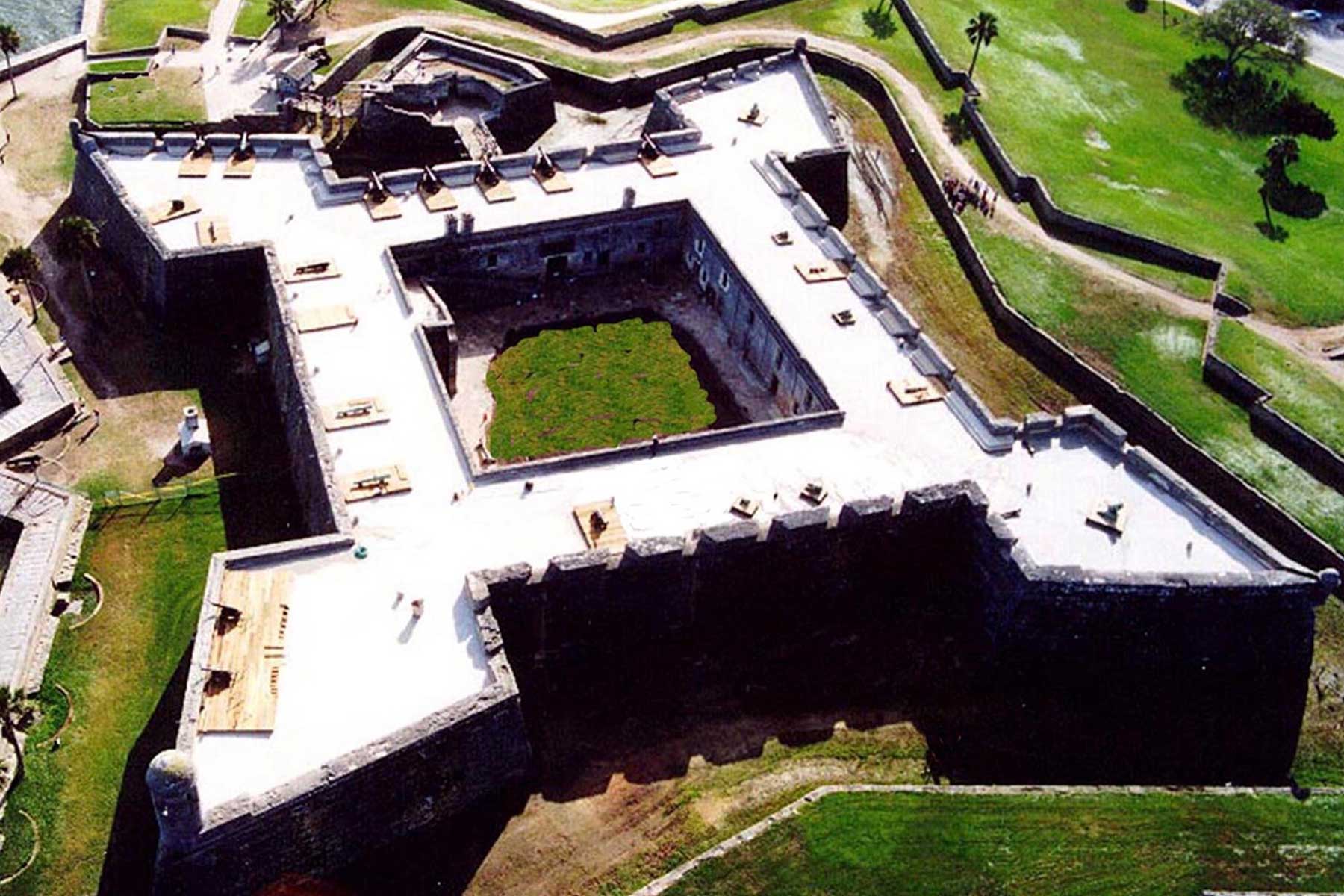
Best Thing to Do at Castillo De San Marcos
Tour the Fort – Touring Castillo de San Marcos is a lot of fun and a great activity for families visiting the St. Augustine area.
8. De Soto National Memorial
Distance From Tampa: One hour via I-75 S.
The De Soto National Memorial commemorates the landing of Spanish explorer Hernando de Soto and his expedition in the area in 1539, and their subsequent journey through the southeastern United States in search of gold and other riches.
Hernando de Soto was a Spanish explorer and conquistador who is best known for his exploration of the southeastern United States and for being the first European to encounter the Mississippi River. In 1539, he led an expedition of over 600 men from Cuba to the Florida coast, where they established a base camp and began their journey into the interior of the continent.
De Soto and his men traveled through what is now Florida, Georgia, South Carolina, North Carolina, Tennessee, Alabama, Mississippi, Arkansas, and Louisiana, encountering numerous Native American tribes and making contact with the indigenous people of the southeastern United States. The expedition was characterized by its brutal treatment of the indigenous peoples, and it had a profound impact on the culture and history of the region.
The De Soto National Memorial was established in 1948 to commemorate the landing of Hernando de Soto and his expedition in Florida and to educate the public about the impact of their journey on the indigenous peoples of the southeastern United States.
The park features a visitor center with exhibits on the history of the expedition and its impact, as well as a reconstructed Indian village that provides a glimpse into the lives of the indigenous peoples of the region.
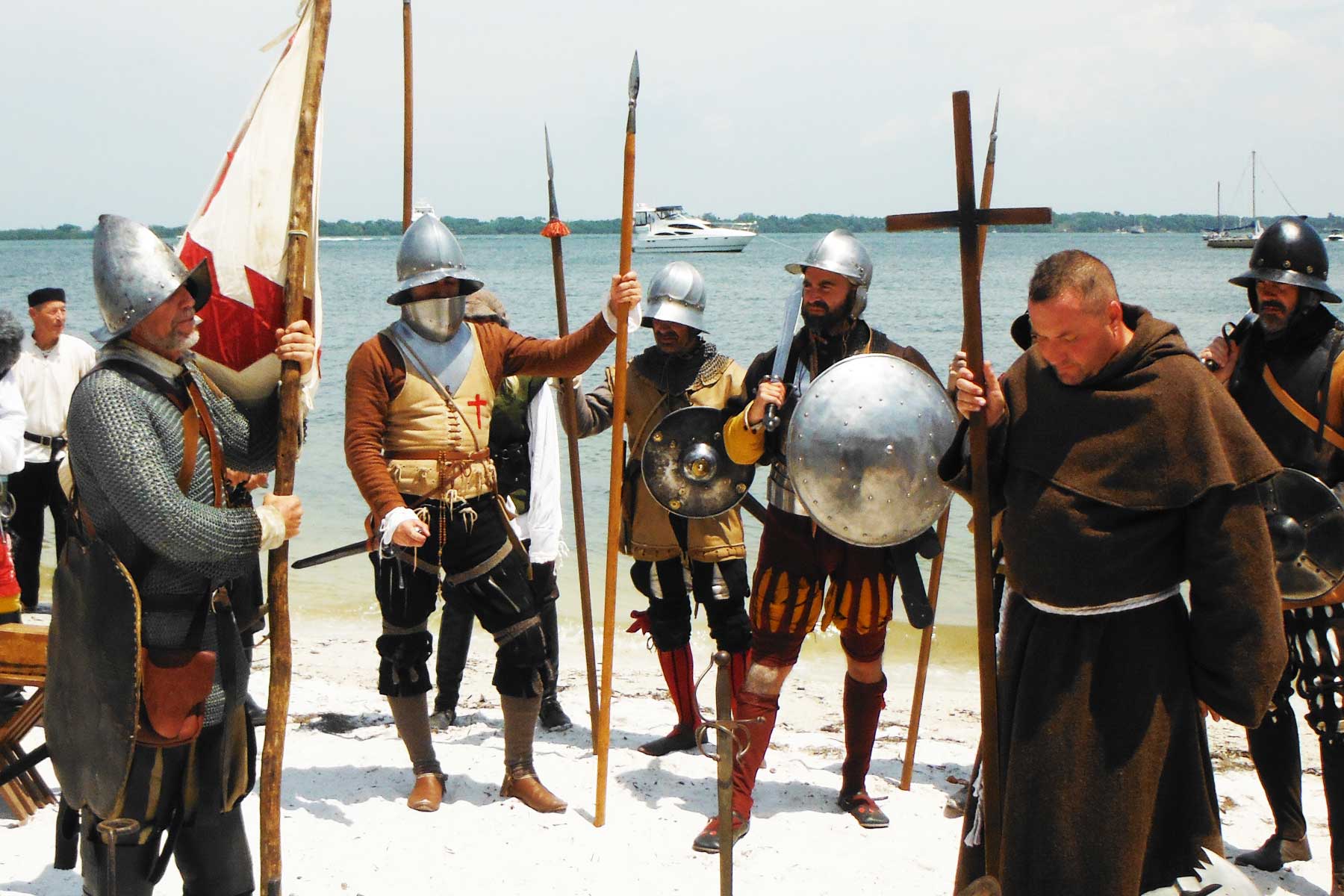
Highlights
Living History Demonstrations – The National Park Service does a wonderful job of reenacting and recreating what life might have been like for the Spanish and natives through their living history programs.
9. Fort Caroline National Memorial
Distance From Tampa: Three hours & 30 minutes via I-75 N & US-301 N.
Fort Caroline National Memorial commemorates the French colonial settlement of Fort Caroline, which was established by French explorer René Goulaine de Laudonnière in 1564.
Fort Caroline was one of the first European settlements in what is now the United States, and it was established by the French as a base for exploring and colonizing the region. The fort was named after King Charles IX of France and was intended to serve as a center for trade, religion, and diplomacy with the native peoples of the region.
However, the fort was soon caught up in the conflict between the French and Spanish for control of the southeast United States. In 1565, a Spanish force under the command of Pedro Menéndez de Avilés attacked and destroyed Fort Caroline, killing most of its inhabitants and effectively ending the French presence in the region.
The Fort Caroline National Memorial was established in 1950 to commemorate the French colonial settlement of Fort Caroline and to educate the public about the history of the fort and the early European exploration and colonization of the southeastern United States.
The park features a visitor center with exhibits on the history of Fort Caroline and the French colonial period in Florida, as well as a reconstructed Timucuan Indian village that provides a glimpse into the lives of the indigenous peoples of the region.

National Parks Near Tampa FAQ
11 national parks are in Florida. They are some of the most unique in the country. From the diverse Everglades to the historic Castillo de San Marcos, there’s a lot to discover here. While you’ve probably heard about Florida’s three big National Parks down south, the other eight are definitely worth a visit as well.
Universal Studios Florida, Universal’s Islands of Adventure, and Universal’s Volcano Bay water theme park.
Almost 70 miles (113 km) west of Key West lies the remote Dry Tortugas National Park. This 100-square mile park is mostly open water with seven small islands.
Why Trust Us About National Parks Near Tampa?
We’re Jim Pattiz and Will Pattiz, collectively known as the Pattiz Brothers (and sometimes the Parks Brothers) and we absolutely LOVE the national parks.
You should probably know that we don’t just make this stuff up out of thin air. We’ve spent our entire adult lives exploring and filming America’s national parks and public lands.
We’ve worked with the National Park Service, the Department of Interior, USDA, and the U.S. Forest Service for years creating films on important places and issues. Our work has been featured in leading publications all over the world and even some people outside of our immediate family call us experts on the national parks.
Meet The Parks Brothers
Map Of National Parks Near Tampa
List Of National Park Sites Near Tampa
- Everglades National Park
- Biscayne National Park
- Timucuan Ecological & Historic Preserve
- Big Cypress National Preserve
- Canaveral National Seashore
- Fort Matanzas National Monument
- Castillo de San Marcos National Monument
- De Soto National Memorial
- Fort Caroline National Memorial
Helpful Related Articles
Overseas Highway Road Trip: Miami to Key West Drive: Everything You Need to Know
Best East Coast National Parks: Top 10 Best East Coast National Parks Ranked
National Parks Ranked: ALL 63 US NATIONAL PARKS RANKED By Experts
Most Visited National Parks: Top 10 Most Visited US National Parks
Georgia National Parks: 10 Amazing Georgia National Parks Worth Visiting
South Carolina National Parks: 8 Epic South Carolina National Parks Worth Visiting
National Parks Road Trip: 10 EPIC National Parks Road Trips (Expert Guide)
We Hope You’ll Follow Our Journey

Our goal here at More Than Just Parks is to share the beauty of America’s national parks and public lands through stunning short films in an effort to get Americans and the world to see the true value in land conservation.
We hope you’ll follow our journey through the parks and help us to keep them the incredible places that they are. If you’re interested in joining the adventure then please sign up below!

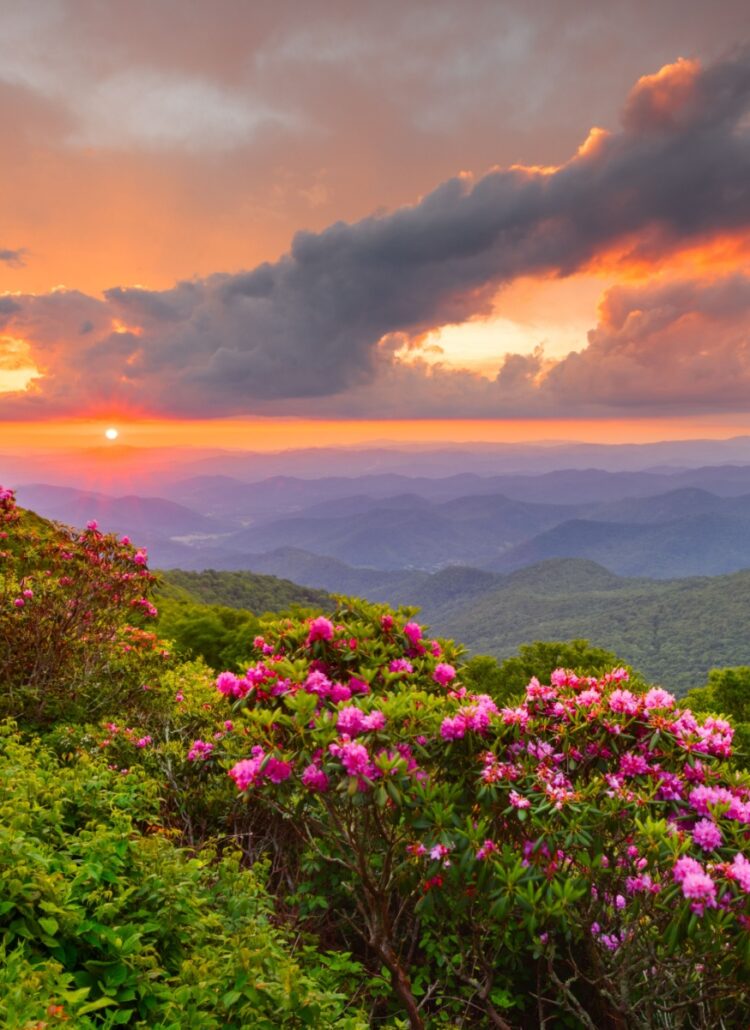
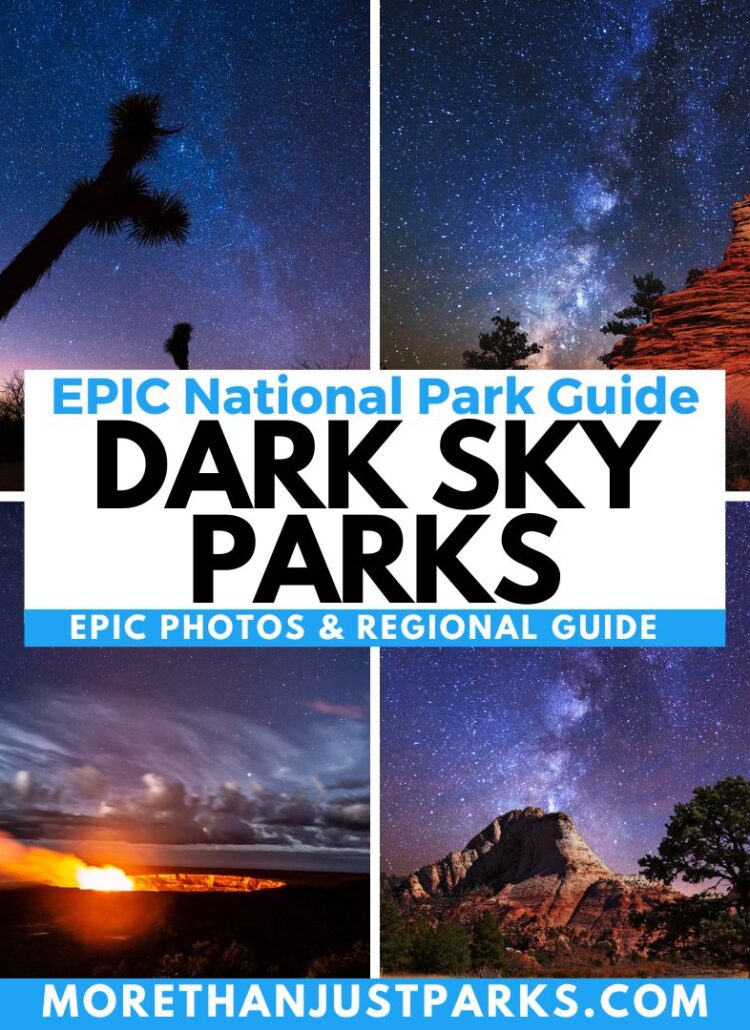
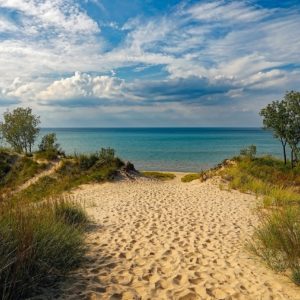

Leave a Reply